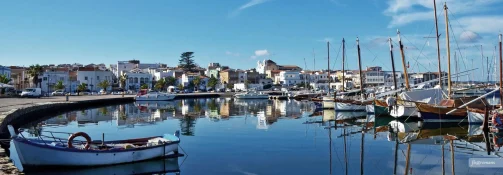The history of Calasetta began in 1769, when 38 families of coral (later tuna) fishermen, originally from Pegli but from the Tunisian island of Tabarka, already the founders of Carloforte, asked King Charles Emmanuel to populate the northern coast of the island of Sant’Antioco as well. The 130 Tabarka settlers settled in Cala de Seda, opposite the island of San Pietro, along the coastal routes of passage of tuna, whose fishing has made Carloforte and Calasetta famous and contributes to their culinary delicacies. Then came settlers from Piedmont, who brought valuable wine-growing techniques, hence the production of the famous carignano del Sulcis. Finally, more settlers arrived, from Sicily. Today three thousand inhabitants populate the second urban center – after Sant’Antioco – of the largest Sulcis island. The original Tabarchine and Ligurian characteristics are unchanged, including the language. The village, which is extremely regular and orderly, is climbed on a small hill that slopes down to the harbor. In the center sprouts a tower built by the Savoys before the foundation to defend the channel between the two islands. Calasetta is characterized by white houses, blue sky and sea and green junipers. The coastline is low and sandy in the northeast with three wonderful beaches: spiaggia Grande, Sottotorre and La Salina, whose soft sands swell into dunes surrounded by a pond, a bird sanctuary. While to the west, sheer cliffs dominate: resplendent are the striking Mangiabarche, guarded by a lighthouse on the cliff opposite, and the splendid Cala Lunga, an emerald-green fjord leading from the open sea to a sheltered beach. You’ll reach some stretches only by boat, on foot or by mountain bike, such as Cala Tuffi, a pool surrounded by rock walls. Then there’s Portixeddu, made of pebbles, and Sparrows’ Nest, a pair of stacks emerging from the water that are a refuge for birds.
Testifying to Calasettan prehistory is the domu de Janas of Tupei, where fragments of terracotta, bronze and clay objects were found. There is no shortage of remains of nuraghi placed on bricchi (reliefs). In the countryside, rock carvings from the Phoenician period, remains of a (possibly) Punic sarcophagus and, from the Roman period, obsidian finds and the ruins of an ancient building were discovered. In the Middle Ages the area was frequented by the inhabitants of nearby Sulki (present-day Sant’Antioco), a Phoenician colony conquered by the Carthaginians, which reached its peak in Roman times. Not to be missed is a visit to the Museum of Contemporary Art (MACC), which houses a collection of paintings summarizing European trends between 1960 and 1970.



